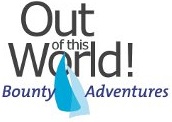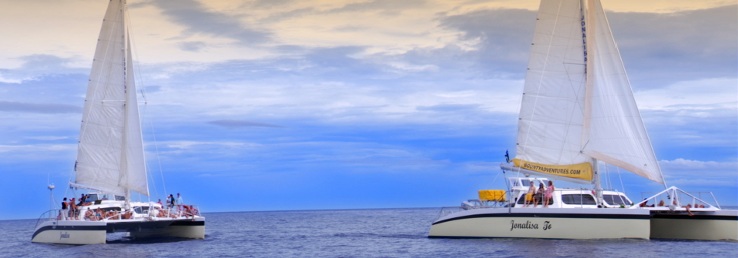About Curaçao
Entry Requirements:
US and Canadian citizens need either a valid passport, or proof of citizenship in the form of an original birth certificate accompanied by photo ID, and an onward or return ticket. Most other nationals need only a passport. Visitors from the Dominican Republic, Colombia and Haiti require a visa. You will need to apply for a resident permit if you plan to stay for longer than three months. You are not allowed to work or live on Curacao without a work permit.
Location:
Curaçao is located in the southwestern Caribbean. The largest of the Netherlands Antilles, it is 38 miles long and from 2 to 7.5 miles wide. It is located just 35 miles north of Venezuela, 42 miles east of Aruba and only 2 1/2 hours by air from Miami. Curaçao is outside the hurricane belt, making it a sure holiday destination for good weather.
Population: The population of 130,000 is made up of 55 nationalities. Willemstad is the island's capital and only city.
Government: Curaçao, along with neighboring Bonaire and three islands in the north eastern Caribbean (St. Maarten, St. Eustatius and Saba), form the Netherlands Antilles, an autonomous part of the Kingdom of the Netherlands. Curaçaoans are Dutch nationals and carry European Union passports.
Say What? Dutch is the official language, but Curaçaoans also speak English, Spanish and their own unique blend, Papiamento.
Cruise Lines: Air Tours/Sun Cruise, Deutsche Sectouristik, Carnival Cruises, Holland America, Princess Cruises, Norwegian Cruise Line, Royal Caribbean Cruise Line, Royal Cruise Line.
Careful Restoration Preserves A Unique Heritage.
The Dutch have left their lasting mark on Curaçao in many areas, but perhaps none as striking as the architecture. Nowhere else in the world outside of the Netherlands are there so many exquisite 17th and 18th Century Dutch colonial buildings.
Early settlers brought with them all their traditions, including their architecture and their notion of what made a proper home. In time, styles were modified to fit the realities of a dry and breezy climate by incorporating Caribbean influences such as verandas, porches, fretwork and shutters -- and by adopting a palette of Caribbean colors undreamed of in Amsterdam.
Especially beautiful are the restored mansions of Scharloo and Pietermaai, dating from the 1700's. These neighbourhoods, along with the historic city center in Willemstad, have been placed on the UNESCO World
Heritage List, commemorating their unique value to the world's cultural and natural heritage. Along with Schottegat Harbor, the largest in the Caribbean, they have joined the ranks of the extraordinary: the Great Wall of China, the Taj Mahal, the Acropolis, and Vatican City are also on the UNESCO list.
Taxi hints:
Taxi's are easy to recognize by their signs and the TX on their registration plates. The prices are based for 1-4 people from 6 am-11pm. A fifth person costs 25% more. After 11pm there is 25% surcharge. Passengers should agree on a price for the journey with the driver first. There are taxi stands at the airport, hotels and Sha Caprileskade in Punda.Taxi Main Office: tel: 869-0747 Complaints: 869-0747.
The Flag:
Curaçao's flag portrays the blue sea and sky, bisected by the yellow sun. The two stars represent Curaçao and its uninhabited sister island Klein Curaçao; their five points symbolize the five continents from which the varied local population originates. 2 of July is the day of Flag in Curacao.
Religions:
Catholics, Protestants, Jews and Muslims all have their own houses of worship and practice their religions freely. Over 80% of the population is Catholic, largely people of African descent. Curaçao has a well earned reputation for religious and ethnic harmony. Adventists, Anglican/Episcopal, Baptists, Mormons, Jehovah's Witnesses, and Methodists are all represented and practice their religions freely.
What Time Is It?
Curaçao is on Atlantic Standard Time: one hour earlier than US Eastern Standard Time (the same time as Eastern Daylight Savings Time) and four hours later than Greenwich Mean Time.
What to Wear:
Since temperatures are warm throughout the year, light, casual tropical wear is in order. Outside, protect yourself from the sun. Most indoor establishments are air conditioned; you may need a lightweight jacket or long sleeves. Locals dress fashionably, particularly for indoor evening events; dress for outdoor festivals is decidedly casual. The strong trade winds may make wraparound and billowing skirts a problem. Some restaurants prohibit shorts or sandals; some casinos also require jackets for men. Overly revealing clothes and bathing suits are not appropriate, except on the beach. If you plan to walk in the countryside, wear sturdy shoes and long pants to protect your legs from the cacti.
Tipping:
It is customary to tip porters NAFl. 1 per bag, and taxi drivers 10% of the fare. Restaurants usually add a 10% service charge to the bill; you can leave a couple more guilders change if you like. Most hotels add a 12% service charge to the bill. All this beside the 6% Government sales tax.
Shopping:
Curaçao has been a major trade centre for hundreds of years so it's not surprising that stores are stocked with quality items from around the world. It's hard to beat Willemstad for shopping ambiance. You bargain hunt in exquisite, centuries-old buildings while ocean liners cruise up the channel that cuts through the city, so close you could almost touch them.
Punda is the city's commercial centre, with several upscale boutiques selling fashionable designer clothing, perfumes, imported linens and expensive jewellery. There are many small shops with a wide variety of merchandise, from electronics to souvenirs and bargain clothing. Heerenstraat and Madurostraat are wide pedestrian malls, closed to motor traffic. Otrobanda's main shopping street, Breedestraat/Roodeweg, is bustling, particularly on Saturday mornings.
Suggested Local Souvenirs
Artist
Visit Mirjam Griffioen at Caracasbaaiweg 232 for great paintings and 3D artCeramic replicas of local buildings, Square nickels and fifty cent piecesHanging planters painted like tropical birds, made out of old tires Handmade dolls in folkloric costumes, Works by local artistsLocal music, Postcards and note cards created by local artists

About Curaçao
About our beautiful island Curaçao

Copyright Bounty Adventures 1996 - 2012
